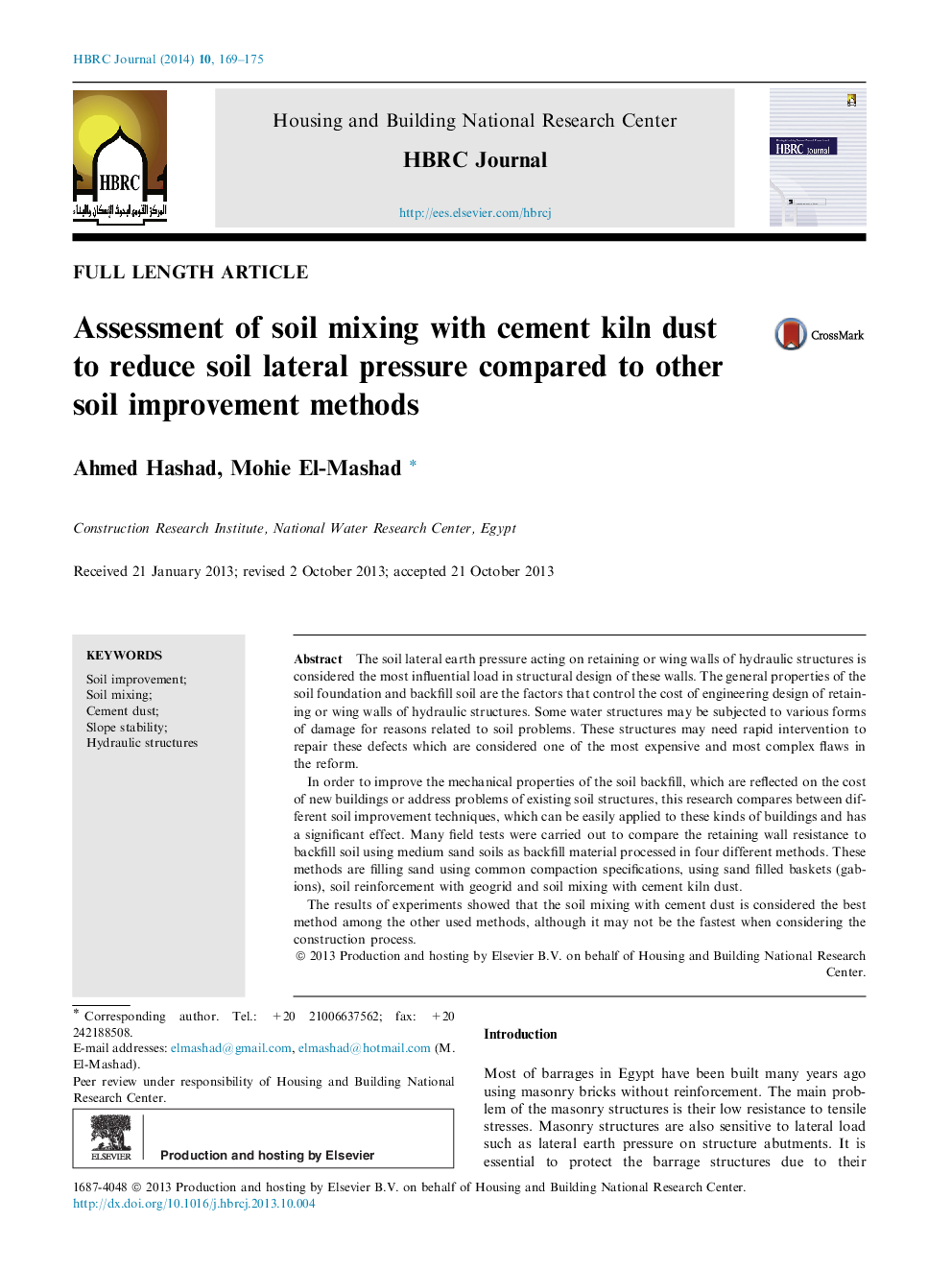| کد مقاله | کد نشریه | سال انتشار | مقاله انگلیسی | نسخه تمام متن |
|---|---|---|---|---|
| 274696 | 505364 | 2014 | 7 صفحه PDF | دانلود رایگان |
The soil lateral earth pressure acting on retaining or wing walls of hydraulic structures is considered the most influential load in structural design of these walls. The general properties of the soil foundation and backfill soil are the factors that control the cost of engineering design of retaining or wing walls of hydraulic structures. Some water structures may be subjected to various forms of damage for reasons related to soil problems. These structures may need rapid intervention to repair these defects which are considered one of the most expensive and most complex flaws in the reform.In order to improve the mechanical properties of the soil backfill, which are reflected on the cost of new buildings or address problems of existing soil structures, this research compares between different soil improvement techniques, which can be easily applied to these kinds of buildings and has a significant effect. Many field tests were carried out to compare the retaining wall resistance to backfill soil using medium sand soils as backfill material processed in four different methods. These methods are filling sand using common compaction specifications, using sand filled baskets (gabions), soil reinforcement with geogrid and soil mixing with cement kiln dust.The results of experiments showed that the soil mixing with cement dust is considered the best method among the other used methods, although it may not be the fastest when considering the construction process.
Journal: HBRC Journal - Volume 10, Issue 2, August 2014, Pages 169–175
